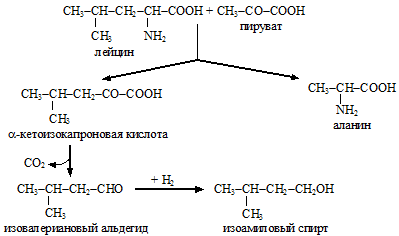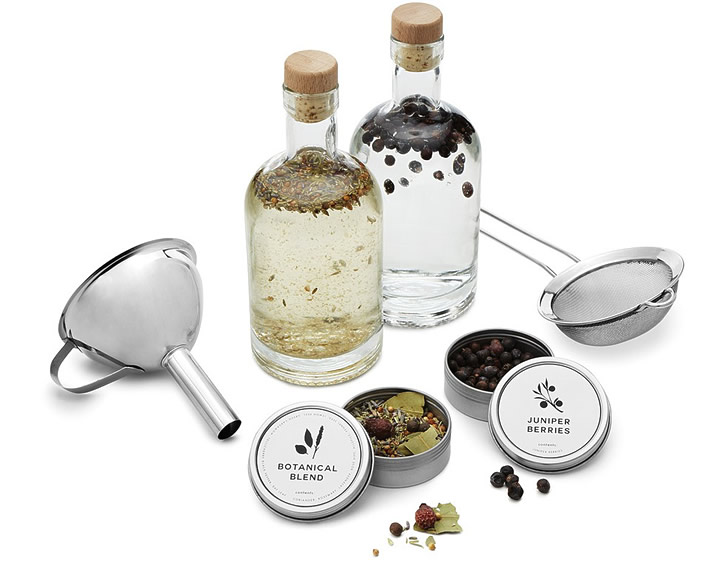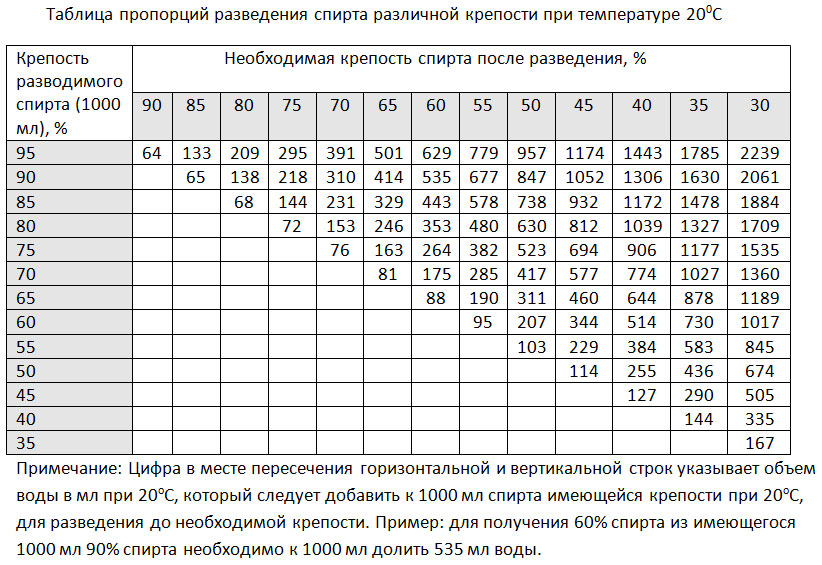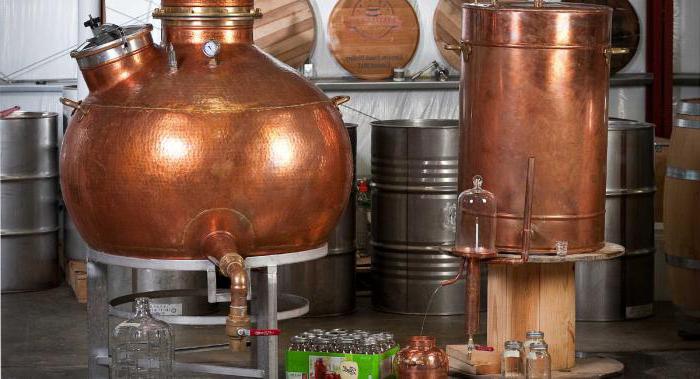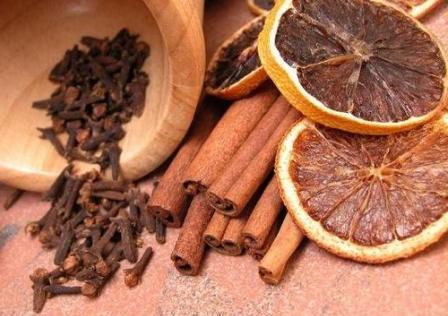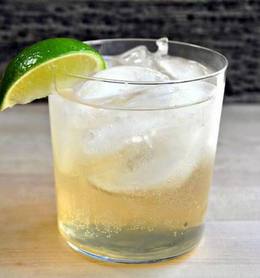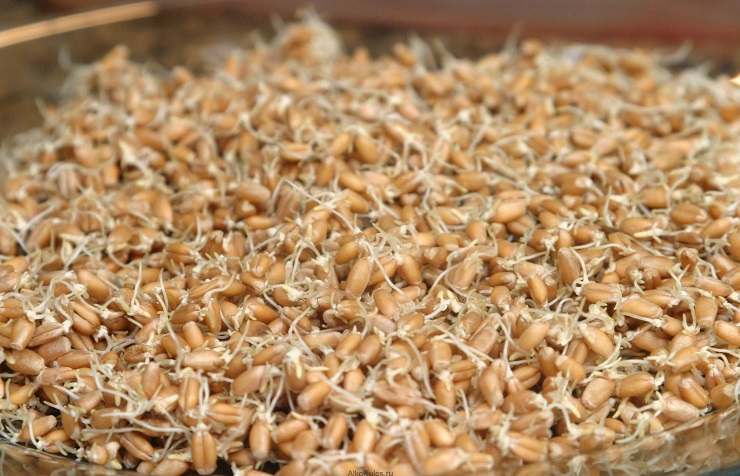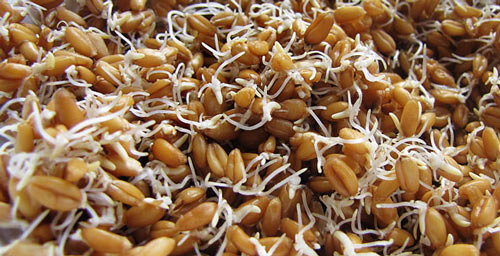Gin drink at home. How to make gin from moonshine
I will make a reservation right away - gin is not my favorite drink, but for the purposes of the experiment, I decided to try to make gin from moonshine. It’s just that not so long ago a friend treated me to “homemade gin” - it was banal vodka infused with juniper berries. I said that Alaverdi will treat him by making a real homemade gin. It is said - done, and I set about cooking gin from moonshine.
By and large, there are two options to cook gin yourself at home: this is tincture and distillation. Tincture is the simplest version of “Genever” - with what actually the history of gin in Holland began once. During the plague epidemic, such a tincture on juniper berries was used as a prophylactic.
The second option is the distillation of flavored raw materials - this option allows you to get homemade gin from moonshine, very close to its factory counterparts.
Moonshine Gin Recipe
I’ll make a reservation right away - there are many options. I give the ingredients that I used:
Double distillation moonshine, well refined
Juniper berries at the rate of 20-25 berries per liter
Cinnamon - per liter 1 small stick
Anise - gram (or slightly less) per liter
Black pepper - 5-6 peas per liter
For three liters of moonshine - the peel of 1 orange and 1 lemon

The technology of making gin from moonshine at home
Of course, in the standard version, wheat moonshine is taken for the basic basis of homemade gin. But for a long time I got my hand on sugar moonshine, and it is much easier to manufacture. Therefore, the basis for me was moonshine made from sugar. Three liters of double distillation sugar moonshine, perfectly refined, with a strength of 64 degrees.
Since the berry picking season was lost, and I don’t know where the juniper grows, I bought it at the pharmacy. By the way, you can also buy anise seeds there. Counted out 70 juniper berries and crushed them. I peeled the lemon and orange peels in a thin layer, the very top. In fact, we just need the zest, it contains aromatic substances - and cut it off.
Cinnamon, pepper, anise, juniper berries and zest of lemon and orange are thrown into a jar of moonshine. Tightly close and leave to insist for a week.
After a week, we filter the resulting tincture through several layers of gauze and dilute to 30-33 degrees. (In my case, it turned out 1 to 1)

Distillation
We start as standard - we select 1% of goals from the total flooded volume. Then we select the body, but there is one important nuance. The body must be selected up to 50º in a stream. Otherwise, the resulting gin will be opalescent. Imagine that you put a little tooth powder in a bottle, put a few drops of sunflower oil and a few drops of gasoline. They shook it all sharply. Here is the result - this is opalescence. The appearance of the drink is completely lost. Tails, however, can be selected further - they will find application.
The resulting home gin is bred to 45-48º. If you bring gin out of moonshine to the standard 40º - then it will not feel citrus notes.
Pour bottled gin from moonshine and let it stand for a week. If absolutely unbearable - at least a couple of days.
PS During distillation, I divided the raw into two parts. I overtook the first one as standard, while driving the second one, I added all the ingredients that moonshine insisted on to the steam tank. The first run turned out with notes of aroma. The second run turned out with a strong, vivid taste of juniper. As a result, before diluting, I mixed these two bodies - the result was very decent. Next time, during the stretch, I will add about 1/3 of what I insisted on to the steam tank.
How to make gin from alcohol at home? This drink, otherwise referred to as juniper vodka, has been known for centuries and is one of the most popular and favorite on the planet.
A bit of history
His authorship is attributed to Franciscus Silvius, a Dutch scientist of the 16th century, a professor of medicine who used this liquid as a therapeutic drug for kidney diseases. The healing composition could be freely found in pharmacies.
In the mid-17th century, the warming properties of juniper liquid were appreciated by British soldiers, and since 1689, the production of gin was put on stream in England. At first, the pirates' favorite drink (after the rum) was not of high quality and was affordable even for an ordinary commoner. Gin became the first number in America, where he got at the end of the 19th century. Its quality and cost have increased significantly, and in 1920 at the legislative level the exact characteristics of the genie were designated, by which time it had already become popular. So, for its production it was allowed to use alcohol with a strength of at least 96%.
The characteristic signs of juniper vodka
A gin recipe at home is simple. With a great desire, this drink can be prepared by any person who understands what distinctive features he should possess. Strong alcoholic drink - the result of distillation of juniper berries and wheat alcohol should:
- when tasting in pure form, give a strong feeling of cold in the mouth;
- have a pronounced aroma of juniper, significantly suppressing the aroma of other ingredients: almond, orange, coriander, lemon.
English and Dutch gin: distinctive features
How to make gin from alcohol at home? The recipes are diverse and associated with 2 existing types of drink: Dutch and English, differing in the technology of preparation.
Dutch gin is produced by adding aromatic ingredients to the grain wort and then distilling it with the aim of obtaining a “malt wine”. The resulting product must be diluted with water, re-add juniper, flavorings and distill repeatedly. The strength of the finished gin is usually 35 o. When aged in oak barrels, as is customary in manufacturing plants, the drink acquires a characteristic golden color.
English gin is prepared by adding aromatic alcohols and herbal additives to raw alcohol, which is subjected to secondary distillation.
Gene on homemade moonshine
The recipe for gin at home from moonshine is quite simple. To prepare it you will need:
- 2 liters of grain purified moonshine;
- 20-40 grams of juniper berries;
- 8-10 grams of coriander seeds;
- 5-6 grams of orange peel;
- 2-3 grams of lemon peel;
- 2-4 grams of cinnamon (in the ground form of the product you need to take a little less);
- 1 gram of anise, fennel, hyssop, licorice.
The recipe for gin at home from moonshine consists of several stages, the first of which is the preparation of tincture. All ingredients should be thrown in a glass container, pour alcohol and insist in a dark place for a week. Further, it is recommended to drain the liquid, filter it well and dilute with cold clean water to 30-35 about. Then, the diluted tincture should be poured into the apparatus, first setting the heating device to a small temperature (for uniform heating of spices), and then increase it to an average value. Further, it is recommended to take 15-20 ml of “heads”, and the main fraction - until the degree in the stream decreases to 70-65. It is important not to miss this point, since even because of the minimal “tails” the final product will be cloudy. The resulting alcohol should be measured at the fortress and diluted to 45-48 about. It is recommended to do this in a separate bowl, in which to pour part of the alcohol, gradually introducing water into it. The finished drink should be allowed to rest for a week. This is required to round up aromas and acquire a more pronounced and harmonious taste with such an inspiring drink as home-brewed gin. Recipes without distillation are used infrequently, since in this case the output is not gin, but juniper tincture.
Juniper tincture recipe (gin without distillation)
To prepare a specific drink you will need:
- ½ liter of vodka;
- 10 juniper berries.
Berries should be mashed with a rolling pin, put in a glass container, pour vodka and insist 2 weeks. Separately, you need to boil the syrup from 25 grams of sugar and half a glass of water (not bringing to a boil). Combine the settled contents with syrup, give “rest” for 2-3 days, after which you can enjoy the wonderful specific taste of homemade gin.
Alcohol-based gin
The above gin recipe at home is quite popular, but lovers of a strong aromatic drink should definitely try the second recipe, for which you should take:
- juniper fruits - 25 grams;
- caraway seeds - 2 tsp;
- coriander - 3 teaspoons;
- 96-degree alcohol - 610 ml.
Cumin with coriander and juniper fruits should be infused in separate containers.
- In 330 ml of alcohol you need to add 70 ml of water, thus lowering the degree to 80. Pour juniper berries with the resulting solution.
- The remaining 280 ml of alcohol dilute 60 ml of water to 80 about. Pour cumin and coriander into the resulting liquid.
- Insist both solutions for 4-5 days, stirring regularly. Then each separately distill, pre-filtering, squeezing the remaining alcohol from the fruit and diluting 1.5 times with boiled water.
- The first 10 ml should be splashed out. Drive out the distillate from each infusion (260 ml each), mix and dilute to obtain 1 liter of quality gin with boiled water.
Homemade Gin Citrus Recipe
To make home-made gin, you will need:
- ½ liter of moonshine;
- 70 grams of juniper berries;
- zest of lime, lemon, orange.
This gin recipe at home is based on combining all the ingredients and insisting them for 2 weeks. Then the liquid must be diluted with water to 45 about the fortress, add a small amount of fructose and insist for another 7-10 days, sometimes shaking. The drink is ready.
Gene appeared in the 17th century in the Netherlands; he owes his appearance to the Dutch doctor Francis Sylvia. The name is derived from the word juniper, translated into French - “genievre”, in the Netherlands it was dubbed “genever”, and in England it was reduced to “gin”. Gin refers to strong alcoholic drinks with a strength of up to 45 degrees.
Composition for gin. The basis of the drink is wheat, grain alcohol with the addition of juniper berries. In addition to these ingredients, lemon or orange zest, coriander, caraway seeds and various aromatic spices are added, which give the genie its unique taste. In the Netherlands, gin is aged in oak barrels, so its color is golden; English gins are always transparent.
In its pure form, gin is consumed little because of its dry taste and high strength, therefore, various cocktails are made on its basis, the most popular is, of course, “gin and tonic”. There are several recipes for making gin, but distillation is a must in every condition. You can make a tincture of juniper, but it will not be gin, but a completely different drink.
It is not difficult to make gin on your own at home, the two most simple recipes for making gin are described below.
Classic Home Gin Recipe
 According to this recipe, some varieties of Dutch gin are usually made. The technology of preparation consists in insisting juniper berries and spices with alcohol. And then the infusion is distilled. This is the most simple and common recipe for home cooking, it is easy to repeat it. For the manufacture does not need special equipment, almost any simple distillation apparatus is suitable.
According to this recipe, some varieties of Dutch gin are usually made. The technology of preparation consists in insisting juniper berries and spices with alcohol. And then the infusion is distilled. This is the most simple and common recipe for home cooking, it is easy to repeat it. For the manufacture does not need special equipment, almost any simple distillation apparatus is suitable.
Ingredients:
- Moonshine 45% - 10 liters;
- Juniper -250g;
- Coriander - 30g;
- Caraway seeds - 20g;
- Fennel - 10g;
- Star anise - 10g;
- Cinnamon - 10g;
- Anise - 10g;
- Zest of 1 lemon
In this composition, the main ingredients are juniper, coriander, lemon peel and of course moonshine. If there are no others, then you can do without them, or replace with other spices. Moonshine is preferably used in grain, it can be replaced with alcohol diluted with water up to 45 degrees.
Cooking:
- Pour moonshine into the bottle, add juniper and all the spices. Close the lid and leave to insist for 10-15 days in a warm, dark place.
- Strain the infused mixture through a sieve, separating from seeds and berries. If a steam-water boiler is used for transferring, then it is possible not to filter the liquid, but to distill along with spices. Fragrant infusion diluted to 30 degrees using clean water.
- Pour tincture into a cube. Select the head fraction, approximately 150-200 ml. Proceed to the selection of the drinking fraction. It must be selected up to 50 degrees. Next comes the tail section, which should not fall into the genie.
- Dilute the freshly expelled gin to 45 degrees. Bottled and let the drink “reach” for a week, and preferably a month.
Video: making gin at home
Plymouth technology home gin recipe
Plymouth - a city in the south-west of England in the county of Devonshire, it can be called the capital of the English gin. The drink made according to this recipe has a richer aroma with an orange aftertaste. In the manufacture of ingredients, the ingredients do not insist on moonshine for weeks as in the first recipe, but are hung under the lid of a distiller, or special devices for laying spices “gin baskets” are used.
During boiling, alcohol vapors passing through the spices draw all the aromas out of them and condense in a receiving container. The time to make gin on this technology needs a lot less, but you need a device that is easy to make at home.
As an impromptu gin basket, you can use a regular stainless steel sieve or colander. It must be suspended on wires in a cube above the alcohol mixture. It is even easier to use a bag made of linen or cotton, suspended under the lid of the device.
Composition:
- Moonshine wheat 45% - 3l;
- Juniper berries - 3o gr;
- Coriander - 2 gr;
- Orange zest –1.5 g;
- Lemon zest - 1.5 g;
- Anise - 1 gr;
- Angelica - 1.5 g;
- Iris - 1.5 g;
- Cardamom –1 gr.
How to cook gin:
- We fix a sieve on the neck of the moonshine still, add prepared ingredients to it and fill in the moonshine.
- We install a column on the cube and turn on the heating. After the first drops go, we reduce the power. We proceed to fractional selection.
- The head fraction will be approximately 40-60 ml. Determine when you need to complete the selection of goals in the following way. Add a small number of heads to the water, if the liquid becomes cloudy, then continue the selection and produce it until opalescence ceases. After that, you can increase the temperature and select the "body".
- The body must be selected up to 70-65 degrees in the stream. Dilute the selected "heart" with water to 43-46 degrees and bottle.
Leave the drink in the glass for a week, so that the genie “reaches”. After aging, the taste of homemade gin will become harmonious with the pronounced tones of juniper, and over time it will acquire an increasingly noble taste.
Homemade gin - video recipe
Fans of strong high-quality alcohol can not always afford it: excise taxes, fees and taxes sometimes make the price of such a valuable drink sky-high. However, our people are clever and inventive. Interested people have access to gin at home from moonshine. Its recipe can be mastered not only by experienced moonshiners, but also by those who just buy a home-made alcoholic drink. A little patience, a little skill - and you can enjoy a drink that differs little from the original.
Shattering Myths: A Genie Story
Somehow, it was believed that gin is alcohol of English origin. Meanwhile, the British simply borrowed the idea. The pioneers were the Dutch, back in the 12th century, trying with the help of gin to fight the plague.
The year of the official "discovery" of the genie is considered to be the 1650th, in which the doctor de La Bois patented it as a diuretic. After a couple of decades, the drink was already used for completely different purposes and for its smell was called genever, from "juniper" in French. British troops, who were an ally of Holland in those years, instantly appreciated the virtues of the genie and called him the elixir of courage. They brought the recipe home, where the British quickly launched home brewing, changing the original name into, in fact, gin. And by the middle of the 18th century, it was already monopolized by the state and was considered a national drink.

Gin at home from moonshine: a recipe and source requirements
Remember that home-made alcohol has a specific smell and includes completely unnecessary oils. Therefore, moonshine must certainly be double distillation. Moreover, before the second, it is necessarily cleaned - soda, potassium permanganate, proteins, milk or charcoal of your choice.
Make sure that the manufacturer did not forget to remove the so-called heads with tails - they are superfluous in the future gin. It would also be nice to dilute the moonshine with water up to 30 percent before re-distillation. Excess fluid will be removed, and the bond, quite strong, will greatly weaken.
Moonshine after the second pass through the apparatus should be very strong, not less than 80 revolutions. Before further manipulations it will need to be diluted to the desired degree.
And one more important observation: before making gin at home, pour juniper berries into small fabric bags and hold them for several days somewhere in a dry room. Gin experts assure that the fruits at the same time gain a more seasoned and vibrant aroma.

Juniper tincture
One of the easiest ways to make gin from moonshine is to withstand berries in alcohol, as is the case with other ingredients for tinctures. The taste of the drink will be very close to the original Jenever. About half a liter of 50-degree moonshine is taken about ten pieces to better pick up the aroma, they crush or crush, after which they are poured into the base and infused for two weeks. Syrup is boiled from a spoonful of sugar and a triple volume of water until bubbles appear. Gin is filtered, combined with syrup and aged for at least three days. Then you can start to celebrate or wait for the next ceremonial date.

Lazy: the right home genever
However, if you are interested in real gin at home from moonshine, the recipe recommends including berries in from the very beginning of its manufacture. It will take a kilogram of fruits - selected, ripe and fresh. They warm up well and pour in a liter of heated water, half a glass of sugar and a spoonful of dry yeast are poured here. The tank is placed under the water seal for a week or 10 days. At the end of the fermentation, the mash passes through the distillation cube twice with purification and leaving only the “body” of the gin. If desired, it can be additionally insisted, but it is at this stage that it has a classic taste and smell.

Homemade Beefeater
You can turn moonshine into gin in the middle of the process. 10 liters of good, purified, double-distilled homemade vodka in 50 revolutions are taken. In the container with moonshine are placed:
- fresh, unmarried, mashed, - 200 grams.
- Cinnamon - a broken piece at your discretion or an incomplete tablespoon.
- Powdered coriander - about two tablespoons.
- Freshly grated zest with one lemon (about a spoon).
- Fennel, anise, hyssop, licorice - for a small spoon, can be incomplete.
The bottle is loosely covered and placed for two to three weeks in the dark. Temperature - room.
The next stage is the cultivation of the workpiece to a fortress of 20 percent. Moonshine is pouring into the water! Secondary distillation is carried out with the discharge of the “pervak” and “tail”. The final stage is weekly sedimentation and filtering.
The most important thing is cocktails
Gin, in which degrees fluctuate between 37.5 and 47 revolutions, is on the list of the strongest drinks. Only heavier alcohol and undiluted moonshine will be harder. Therefore, gin is alcohol rarely consumed in its pure form. In addition, the sharp taste and smell of the drink are not too conducive to drinking without pleasant additions. In addition to the well-known combination with homemade moonshine, the recipe of which you choose, can be put into very interesting cocktails:
- “Arno”: on a stack of gin, and dry vermouth plus ice.
- "Suzy Wong": gin, fresh lemon juice, tangerine liqueur - 20 milliliters each. It is shaken by a shaker, poured into a glass and supplemented with 20 g of brut.
- "Alexander": 30 ml of homemade gin, fat cream and coffee liqueur. Pass through a shaker with a pinch of nutmeg and ice.
Merry feast!
Fans of all English or lovers of the taste and smell of juniper berries can make gin at home from moonshine: the recipe for this drink exists in different versions, although it is believed that it is necessary to take gin for it.
On an industrial scale, gin, as a rule, is prepared by double distillation of grain mash with juniper berries, various spices, seeds and roots.
Once this famous drink with a strength of at least 40 ° served as a medicine, so the taste of the traditional gin is very sharp and dry with a distinct smack of juniper berries.
The most common type of gin used to make cocktails is London dry gin.
Brief Background
It is believed that the very first gin was made by Dutch monks in the 12th century as a treatment for the plague. However, there is a very specific official date ─ this is 1650, when the Dutch doctor Silvius, in search of a diuretic that heals kidneys, invented tincture of juniper berries for alcohol, which they began to call genever, that is, juniper.

Gin - Juniper Vodka
Genevier fell into the hands of the English soldiers, they quickly appreciated the taste and healing properties of the drink and began to drive it in their homes in England, renaming alcohol to gin (gin). Dutch varieties ─ golden color, due to the fact that they are aged in oak barrels, English, as a rule, ─ transparent.
As the very famous French writer Francoise Sagan noted: gin expands blood vessels, heart and understanding.
The traditional dry gin is a strong alcoholic beverage, which, as a rule, is prepared in vertical distillation cubes by double distillation with the addition of berries and herbs to the distillate after the first. In addition to standard berries, the zest of lemon or orange is placed in the liquid, as well as anise, violet root, coriander, cinnamon, fennel, licorice, hyssop and cassia bark. A truly healing drink appears, invigorating and toning the entire body, removing gas formation, slightly diuretic and slightly laxative, which can also be used as an expectorant.
Juniper tincture
There are several ways to make gin at home from vodka or moonshine. The simplest of them is to insist juniper berries on moonshine in exactly the same way as all tinctures do. Of course, moonshine must be prepared either by you or by those whom you trust, because the final result will depend on its quality.
Moonshine should be taken from double-grain distilled mash, purified, preferably coconut charcoal.
The taste of the resulting beverage prepared according to this recipe will be very close to the taste of the original genever. 
Gin Recipe:
- For 1 liter of 45 ° - 50 ° of grain moonshine, you need to take 1 kg of fresh juniper berries or 0.5 kg of dried. Berries can be bought at the pharmacy or at the Auchan store in the spice section. By the way, there you can buy all the other ingredients, except moonshine.
- Crush or crush fresh berries with a rolling pin, add dry berries as is, add 5 g of anise, licorice and fennel. Add 25 g of lemon zest, then pour over alcohol and put to insist for 2 - 3 months in a dark place at room temperature.
- Filter and use as intended.
Distillation Recipes
Recipe number 1:
The prepared juniper tincture obtained according to the above recipe needs to be distilled on the moonshine still, dividing into fractions: cutting off the heads and tails and selecting the body. Read more about making gin in this video:
In addition to the spices already mentioned, experiment lovers put angelica roots and violet root, zest of lime, orange or lemon, coriander, almonds, cardamom, as well as fresh cucumber and rose petals. The scope for creativity in the manufacture of this drink is unlimited.
Recipe number 2:
The preparation of gin according to the second recipe involves the addition of herbs and berries immediately to the cereal wort without prior tincture. After that, the whole mixture is distilled like traditional moonshine, double distillation with purification after the first.
Recipe number 3:
This recipe is also called Plymouth technology. To prepare gin, all the necessary components are suspended under the lid of the cube, and not laid in it.
Rising alcohol vapors choose all aromatic compounds from spicy herbs and berries, after which, having been saturated with them, they pass into the cooler.
In cases where the dry steam dome is non-removable on the distillation column, all spices can simply be wrapped in gauze and placed in it. The result of such an experiment will be just wonderful.

In Plymouth gin, cardamom, orange and violet root must be present
Plymouth Gin must contain violet root, orange and cardamom. In order to add the aroma of spices, you can adjust the strainer or colander under the lid of the cube, or hang the herbs and berries in a cloth or gauze bag, but so that it does not touch the surface of the alcohol.
For 1 liter of double grain moonshine 40 ° - 45 ° you need to take:
- juniper berries 10 - 15 g;
- 2 g lemon and orange zest;
- crushed dried violet root ─ 2 g;
- angelica of the medicinal root ─ 2 g;
- a couple of boxes of cardamom, and if in the seeds, then 1 g.
Gin from moonshine using Plymouth technology is prepared as follows:
- Attach a sieve with spices on the neck of the cube and pour moonshine into the cube directly through them. You can pre-soak spices for the night in moonshine.
- On a small fire under a closed lid without a steamer, distillation begins so that the herbs and berries gradually warm up and slowly give all their taste and aroma qualities.
- After the number of selected heads reaches approximately 20 ml, the temperature can be raised to medium.
- The body, or the main fraction, is taken to a strength of at least 65 °, because if you continue to take away the tails, clouding of the drink may occur during dilution.
- Dilute the resulting Plymouth Gin to 48 ° in this way: first try to dilute part of the liquid in a separate bowl, slowly adding water there. If the result is good, that is, the drink remains transparent, then the entire remaining batch of alcohol is diluted in the same way. Read more about making gin in this video:
Due to the abundance of aromatic oils, the liquid may begin to cloud. To avoid this, it does not need to be diluted below 47 °.
If the resulting gin is cloudy, you can simply add pure alcohol, and it will again become transparent.
Before treating friends and tasting the gin yourself, it is better to let it stand for a good 2-3 weeks or even a month, so that the aromas of the drink “round” and become more subtle. The result will surely please you.

